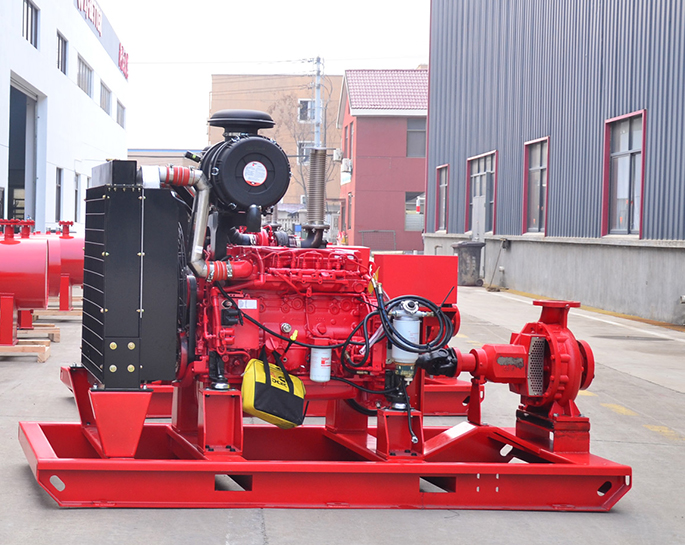Operating a fire pump is a critical task in fire safety, as it plays a key role in supplying water to fire protection systems. Here are some safety measures to follow when operating a fire pump:
1. **Training and Certification:**
- Ensure that personnel operating the fire pump are adequately trained and certified in pump operation and firefighting procedures.
2. **Read the Manual:**
- Familiarize yourself with the manufacturer's manual for the specific fire pump you are operating. Follow the guidelines and instructions provided in the manual.
3. **Pre-Operation Inspection:**
- Conduct a thorough pre-operation inspection of the fire pump. Check for any signs of damage, leaks, or loose connections. Ensure that all controls and gauges are in proper working condition.
4. **Clear Operating Area:**
- Keep the area around the fire pump clear of obstacles, debris, and flammable materials. This includes ensuring proper ventilation in enclosed pump rooms.
5. **Proper Priming:**
- Ensure that the pump is properly primed before starting. Follow the manufacturer's recommendations for priming procedures.
6. **Electrical Safety:**
- If the fire pump is electrically powered, follow electrical safety guidelines. Check that the electrical connections are secure, and there are no exposed wires.
7. **Fuel Safety (if applicable):**
- If the fire pump is powered by a fuel source, follow proper fueling procedures. Store fuel in approved containers, and avoid smoking or open flames in the vicinity.
8. **Regular Testing and Maintenance:**
- Conduct regular testing and maintenance of the fire pump according to the manufacturer's recommendations and relevant standards. This includes running periodic flow tests to ensure proper performance.
9. **Emergency Stop Procedures:**
- Know and understand the emergency stop procedures for the fire pump. Be prepared to shut down the pump quickly in case of any malfunctions or emergencies.
10. **Pressure Relief Valve:**
- Ensure that the pressure relief valve is in proper working condition. This valve helps prevent overpressurization of the system.
11. **Personnel Safety:**
- Provide appropriate personal protective equipment (PPE) for personnel operating the fire pump. This may include gloves, eye protection, and hearing protection.
12. **Communication:**
- Establish clear communication procedures with other personnel involved in firefighting efforts. Ensure that everyone is aware of the pump operation plan.
13. **Follow Local Regulations:**
- Adhere to local fire codes and regulations governing the operation of fire pumps.
14. **Record Keeping:**
- Maintain accurate records of pump tests, inspections, and maintenance activities. This documentation is important for regulatory compliance and troubleshooting.
By following these safety measures, you can help ensure the effective and safe operation of a fire pump in emergency situations. Always prioritize safety and be prepared to respond to any unexpected events.



